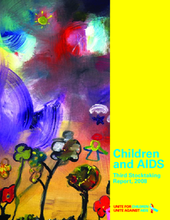This Stocktaking Report, the third since the Unite for Children, Unite against AIDS initiative was launched in 2005, examines data on progress, emerging evidence, and current knowledge and practice for children as they relate to four programme areas known as the ‘Four Ps’: preventing mother-to-child transmission of HIV, providing paediatric HIV care and treatment, preventing infection among adolescents and young people, and protecting and supporting children affected by HIV and AIDS.
The phrase ‘know your epidemic and response’ has become extremely important in the fight against HIV and AIDS, given the different levels of epidemic and diverse patterns in a range of geographical, cultural and social settings and the many ways in which the epidemic has an impact on various population groups.
Knowing your epidemic is about analysing the local situation – who is infected and what factors are driving the risks and behaviours – and understanding and acting on that analysis.
Knowing your response is about knowing the details of the current response, the actions taking place, the coverage being achieved, the quality of the intervention, the policies that are in place or still needed, and the populations being targeted. Consensus in the scientific community and in civil society is that interventions based on such understanding and tailored to the local situation are needed and, importantly, can work.
But to better serve children, knowing your epidemic and response must be paired with ‘know your children’ – determining which children are vulnerable to HIV and AIDS, which children are affected by the epidemic and what impact it has on them; how to reach children affected by AIDS, how to prevent them from getting infected with HIV and how to treat them; how to care for their mothers and how to support them when their mothers or fathers have died; and how to help all children grow safely and develop into adulthood. To address these issues and further improve children’s prospects of survival and for their futures, countries are drawing on experiences and evidence to do things differently than they have in the past.
The growing consensus among most practitioners and policymakers that responses should be AIDS-sensitive – but not AIDS-exclusive – and that a focus should be on strengthening social protection systems. The AIDS epidemic has highlighted the vulnerabilities facing many children; in the most affected regions, addressing those vulnerabilities also reaches those children more directly affected by AIDS.
The shift towards inclusive programming to help all vulnerable children, including those directly affected by AIDS, is having an impact. The growing call for a broader, more inclusive definition of vulnerability is reflected in many countries’ national plans of action in Eastern and Southern Africa.
UNICEF and other agencies are examining how ‘child sensitive’ social protection measures can be designed with children’s development, well-being and protection in mind, and how they can address the higher risk of exclusion for children in marginalized communities and for children who are additionally excluded due to gender, disability, HIV and AIDS, and other factors.

